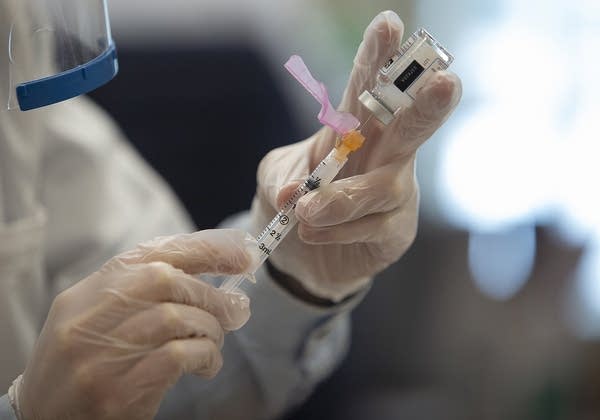For older Minnesotans, whether they're vaccinated has a lot to do with where they live

Pharmacist Dan Cook prepares a dose of the COVID-19 at the Gardens of Episcopal Homes in St. Paul in December. In some rural counties, older Minnesotans are more than twice as likely to have gotten at least a first dose of the vaccine than if they live in most parts of the Twin Cities metro area.
Christine T. Nguyen | MPR News 2020
Go Deeper.
Create an account or log in to save stories.
Like this?
Thanks for liking this story! We have added it to a list of your favorite stories.


